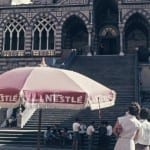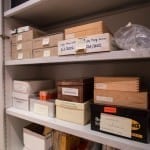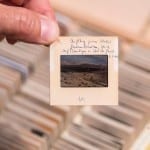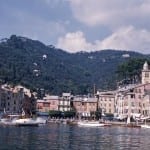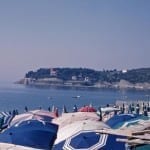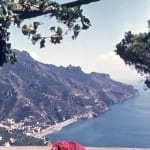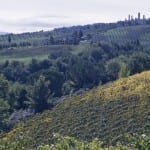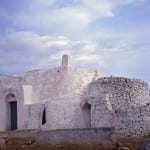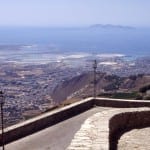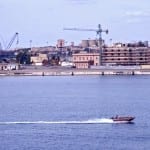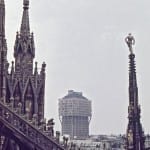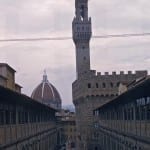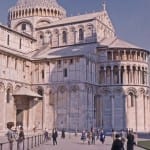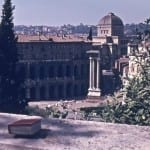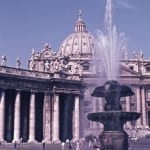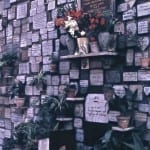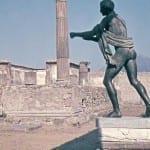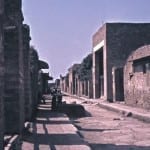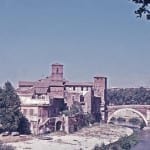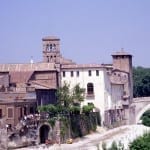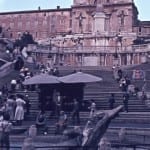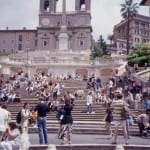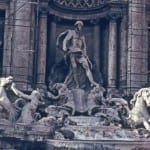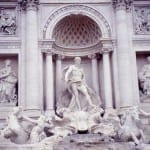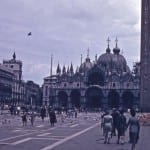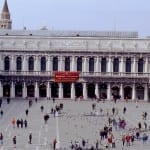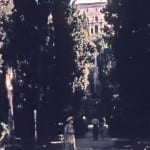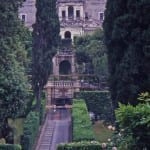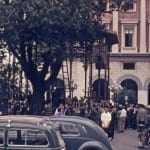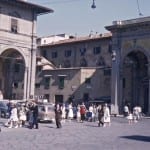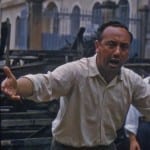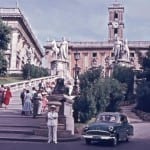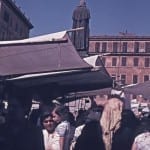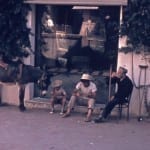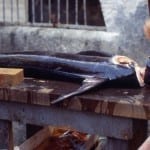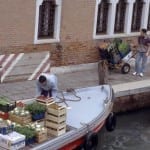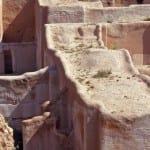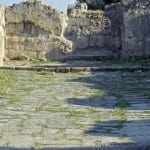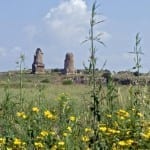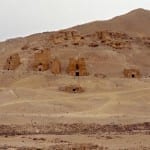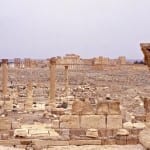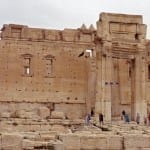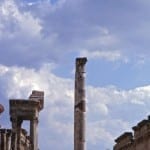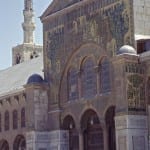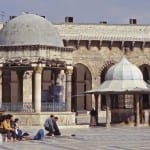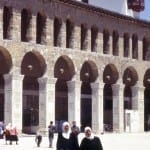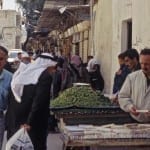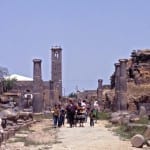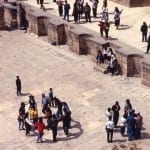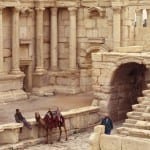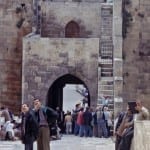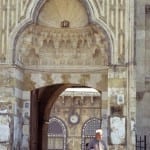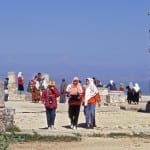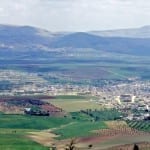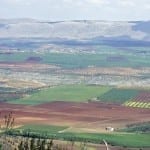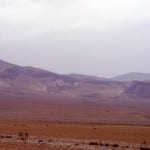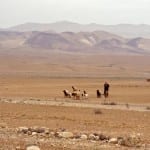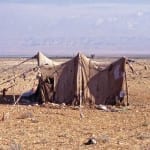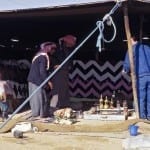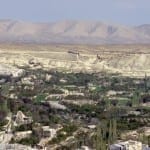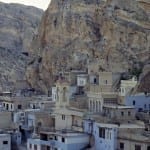Architecture, Cityscape and Landscape in Ursula Wachtel’s Travel Photography
The archive, acquired by the Fotothek through a donation made in 2014 and 2015, gathers the travel photographs taken by Ursula Wachtel between the 1950s and the 2000s. The archive consists of circa 10000 slides and a small number of prints, covering the Mediterranean countries, the Middle East, Asia, Africa, North and South America and Australia. Most images show urban spaces, historical monuments, archaeological sites or landscapes. However, a number of photographs also reflect a certain anthropological interest, giving insight into the daily life of local inhabitants, or portraying visitors within the urban or architectural spaces.
All images are complemented by short notes identifying the sites and recording the date the photograph was taken. Even though the photographs are not of professional quality, the images in conjunction with the notes provide important visual documentation. They show not only the conditions of a monument at a specific time, but also its interaction with the public. The photographs are, therefore, useful to the art historian or the historian of the urban space who can envisage the transformation of a building or an urban area and its relationship with the public. At the same time, they provide the historian or anthropologist with images revealing telling aspects of daily life.
The first campaign of digitization focused on slides of monuments and sites in Italy, following the primary interest of the collection of the Fotothek. This batch of images includes over 1200 slides, taken between the 1950s and the 2000s. A second batch of circa 240 images gathers pictures taken in Syria during a trip in 1995. These slides were selected as they show monuments and sites before their mutilation or destruction during the ongoing civil war.
The digitized images underwent restoration which removed stains, scratches and damage of the original photographs. They are now incorporated in the Fotothek’s online databank and available to the public with metadata. Images of Syria are also complemented with bibliographical references on the sites.
This online exhibition shows samples of the images from the Collection available via the Fotothek’s online databank.
The Photographer
Ursula Wachtel was born in Berlin-Spandau in 1924. After WWII she studied Pharmacy at the Freie Universität in Berlin, and took her doctorate in Chemistry at the Technische Universität in 1954. In the following years she worked as a manager in multinational companies, and from 1980 onwards she was active as executive manager. She specialized in Biochemistry, Nutrition and Dietetics and published several studies in the field. From the 1990s on, she worked on metabolic diseases in children.
Besides travelling for work, Ursula Wachtel developed a great interest for leisure travel. From the mid-1950s on, she visited countries all over the world, discovering her passion for photography. Her images reflect her interest in the history and art of the sites she visited, as well as in the culture of diverse peoples. Twenty years ago, Wachtel joined the Deutsche Stiftung Denkmalschutz, a German foundation promoting the conservation of cultural heritage, as well as participating in campaigns for the protection of monuments in danger.
She received the prestigious Bundesverdienstkreuz, first class.
Table of Contents
1. Italian Landscape
2. Italian Monuments and Urban Spaces in the 1950s
3. The Transformation: Monuments and Cities in the 1950s and in the 1990s and 2000s
4. Street Photographs
5. Syria: Monuments in Danger
6. Syria: The Monuments and Their Public
7. Syria: Landscapes and People
1. Italian Landscape
Landscape is a dominant genre in a collection of travel photographs. This large batch includes images from the 1950s to the 2000s, with subjects ranging from urban spaces to coastal and rural environments.
In the 1950s, Italy was still characterized by rural economy as the country was undergoing an intense process of industrialization, prompted by the social and economic reconstruction in the aftermath of WWII. The photographs taken in this period show the countryside and the coastal territory still in “pristine” condition before the subsequent intensive urbanization.
More recent Images, on the other hand, portray Italian landscapes in which the memory of the preindustrial period is still alive. These photographs, taken in Tuscany, Puglia or Sicily, show the adoption of traditional techniques in farming, building or industry as an aesthetic and functional integration of natural landscape and human activity.
2. Italian Monuments and Urban Spaces in the 1950s
In the course of the 1950s, Ursula Wachtel visited not only the coastal and rural areas of Italy but also historic cities such as Venice, Milan, Florence, Pisa or Rome. Here Wachtel took pictures of the most famous monuments celebrated in the history of art. Only in Milan she focused on a contemporary building: the Pirelli tower, completed and inaugurated in 1960, and considered the second highest building in Europe and a touristic attraction.
The documentary relevance of Ursula Wachtel’s photographs is exemplified by her 1956 image of Piazzale Brasile in Rome. The picture shows the old Roman wall with an image of the Virgin Mary surrounded by votive panels. These latter were removed four years later, destroying a traditional landmark of popular devotion.
3. The Transformation: Monuments and Cities in the 1950s and in the 1990s and 2000s
The comparison of photographs displaying the same sites or monuments, but taken more than 40 years apart, reveals change and continuity. Monuments such as the Fontana di Trevi or Trinità dei Monti reveal an unshakable persistence, even when their facades have undergone restoration or cleaning. Folkloristic details, on the other hand, such as the flower stall on the lower part of the of the Spanish steps, have disappeared from the city scene. In a similar way, the Isola Tiberina looking deserted and dreamy in a 1956 photograph, appears lively and full of renewed activity in 2000.
4. Street Photographs
Extemporaneous street images, portraying daily life in Italian cities, display the historical and social conditions of the country. Photographs shot in the 1950s in cities such as Rome, Milan and Florence show the transition from poor rural economy to industrial mass society. The photographs of a wedding retinue or the pictures taken in public markets reveal telling aspects of the material culture, non-verbal communication, fashion, work conditions.
More recent images, such as those of the fish market in Catania, show the persistence of old working conditions and poor sanitation. Even though they seem to display a traditional and picturesque corner of the city, they reveal the poverty and backwardness of the southern part of the country.
5. Syria: Monuments in Danger
The digitization of the photographs taken by Ursula Wachtel in Syria in 1995 was prompted by their increased documentary importance in the face of the ongoing civil war. The images provide visual testimony of now endangered or destroyed monuments, many of which are included on the UNESCO’s World Heritage List. The unique Syrian heritage is the result of the encounter of different cultures, from Mesopotamia to the civilizations of the Mediterranean Bronze Age and the Phoenicians. Later, the strong impact of the Hellenistic and Roman civilization on the established local tradition created an original classical visual culture from which early Christian and Islamic art and architecture flourished in the following centuries.
The temple of Bel at Palmyra, largely destroyed in 2015, was a primary example of this unique cultural context. The temple was dedicated to a syncretic divinity, symbol of the encounter of different cultures in Syria. Its temenos and sanctuary reflected architectural models from the Hellenistic and the Roman world, and included decorative motifs of oriental origin. Yet, its original architectural layout and figurative decoration were determined by the specific local cult. During the Byzantine domination, the temple was transformed into a Christian church, keeping its sacral importance and witnessing a cultural continuity in the dialectic between ancient world and Christian civilization.
Similar considerations are prompted by images of the now severely damaged Great Mosque of Aleppo. The building, created at the apogee of the Umayyad Dynasty, represents a symbol of the cultural continuity between classical world and Islamic civilization.
The images included in the following gallery show examples of such monuments documented by the archive. For further information and selected bibliography, see the Fotothek’s online catalogue.
6. Syria: The Monuments and Their Public
Usually, photographs taken for the study of urban history or history of art and architecture show the monuments without their inhabitants or visitors. This traditional approach highlights the formal features of the buildings or urban spaces, but omits the physical and cultural relationship of the monuments and their public. The result is the lack of important historical information on the use and function of an architectural space in a specific historical period. A number of the photographs of the archive show these aspects, providing fundamental information for museology, and, more generally, for studies in semiotics.
Images of the Great Mosques of Damascus and Aleppo show how these monuments can be envisaged both as places of religious devotion by the faithful and pilgrims, as well as cultural heritage sites or touristic attractions.
Similar aspects emerge from the observation of images of the sanctuary of St. Simeon Stylite (Kalat Seman), the streets of the historical cities of Bosra, Palmyra and Aleppo, or the imposing castle of Krak des Chevaliers. These spaces, at times crowded by tour operators, visitors or local people, are shown in the midst of daily life, and give witness to the expansion of mass tourism in the 1990s.
7. Syria: Landscapes and People
As in the case of photographs taken in Italy, a lot of the images taken in Syria show landscapes. The images highlight aspects ranging from physical and human geography, to ecology or anthropology.
The remarkable photographs of the Orontes Valley show the rational arrangement of the space of one of the most fertile areas of the country. Pictures of the Syrian desert focus both on the environment and the nomadic life of the Bedouin tribes in this extreme climate. The small town of Malula appears as an example of the cultural complexity of the country, showing a unique relationship between natural environment and human settlement. The town, settled in the rugged mountainside close to an oasis, is the seat of a Christian community still speaking Aramaic who established this site as an important place of cult and pilgrimage in the early Christian period.
Conception, Texts, Translations: Marianne Bieger, Giovanni Freni
Design: Tatjana Bartsch, Giovanni Freni
Photographs: Ursula Wachtel
Digitization and Cataloguing of the Archive: Giovanni Freni
The Wachtel Archive in the On-line Catalogue of the Fotothek
1.7.2016


